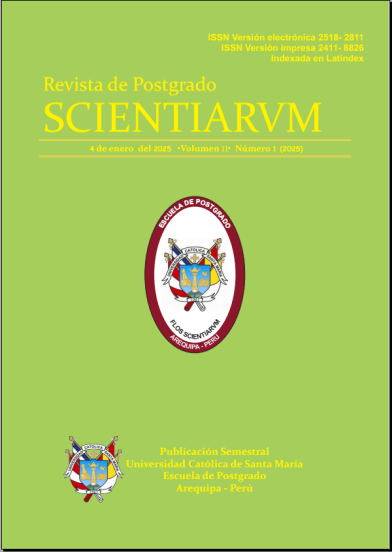BIORREMEDIACION DE RESIDUOS INDUSTRIALES(ACEITES Y GRASAS) MEDIANTE UN CONTACTOR BIOLÓGICO ROTATIVO CON BIOPELICULAS FORMADAS POR CEPAS NATIVAS DE PLANOCOCCUS SP.
Resumen: Los aceites y grasas presente en los residuos industriales provenientes de las industrias Restaurantes y domicilios, crean muchos problemas medioambientales, incluyendo malos olores, la obstrucción de las líneas de alcantarillado y puede interferir con el buen funcionamiento de las obras de tratamiento de aguas residuales. Remoción de los aceites y gracias de las aguas residuales es, pues, de importancia crítica para asegurar que las aguas residuales se gestionen de una forma eficiente.
En el presente estudio, evaluamos la degradación de aceites y grasas usando un Contactor Biológico Rotativo (BCR), en donde los biodiscos son cubiertos con biopelículas formadas por Planococcus sp., una bacteria aislada de suelos desérticos de la Joya Arequipa y registrada en GenBank como EF543862. Recolectamos el aceite proveniente de una empresa del parque industrial de Arequipa, y en una dilución al 20% fueron colocados en un Prototipo de Contactor Biológico Rotatorio (CBR), que presentaba discos con biopeliculas formadas por Planococcus sp y en otro compartimento que contenía un Consorcio de Planococcus sp, y Pseudomona fluorescens.
Para evaluar la Biorremediación del aceite industrial, se monitorearon la concentración de Lípidos, DBO y DQO. Y encontramos que las tres variables se reducen durante el tiempo de monitoreo, alcanzando una degradación de 98%, 99.13% y 96.4% para Lípidos, DQO y DBO respectivamente, concluyendo que la cepa de Planococus sp. Contenidos en el CBR es efectivo y elimina los aceites y grasas presentes en un agua residual. La degradación de Aceites y grasas fue confirmada por HPLC. Esta nueva tecnologia debe ser instalada en las empresas para la eliminación primaria de sus residuos de aceites y grasas.
El Presente trabajo es Financiado por Concytec - Resolución de Presidencia N°348-2010-CONCYTEC-P
Palabras Clave: Planococcus sp., Transferencia tecnológicas, Biorremediación, Biopelículas, DBO, DQO.
Summary: Oils and fats present in industrial waste, food or liquids, clogging of sewer lines and can interfere with the proper functioning of wastewater treatment works. The elimination of oils and the properties of wastewater is therefore of critical importance to ensure that wastewater is managed in an efficient manner.
In the present study, it evaluates the degradation of oils and fats using a Rotating Biological Contactor (BCR), where the biodisc are coated with biofilms formed by Planococcus sp., An isolated bacterium from desert soils of the Joya-Arequipa and registered in GenBank as EF543862. Our collect the oil coming from a company of the industrial park of Arequipa, and in a dilution to 20% were placed in a prototype of Rotary Biological Contactor (CBR) , which presented discs with biofilms formed by Planococcus sp and in another compartment containing a Consortium of Planococcus sp, and Pseudomonas fluorescens.
To evaluate the bioremediation of industrial oil, monitor the concentration of Lipids, BOD and COD. The variables were reduced during the monitoring time, reaching a degradation of 98%, 99.13% and 96.4% for Lipids, COD and BOD respectively, concluding that the Planococus sp. Contents in the CBR is effective and eliminates oils and fats present in wastewater.The degradation of oils and fats was confirmed by HPLC. This new technology must be installed in companies for the primary elimination of waste and grease.
The Present of the work is Funded by Concytec - Presidential Resolution No. 348-2010-CONCYTEC-P
Keywords: Planococcus sp., Technology transfer, Bioremediation, Biofilms, DBO, DQO.
Revista Seleccionada
Enero 2018 Volumen 4 - Número 1 P 23-29
DOI: 10.26696/sci.epg.0068
Enlaces
CIENCIAS SOCIALES Y HUMANIDADES
LOS DERECHOS DEL INIMPUTABLE PENAL
CIENCIAS BIOLÓGICAS Y DE SALUD
ENVEJECIMIENTO HUMANO EXITOSO: CAUSAS Y EFECTOS
OBESIDAD/SOBREPESO, DIETA Y ACTIVIDAD FISICA EN ESCOLARES DE 5 A 10 AÑOS, AREQUIPA, PERU, 2015
AUTOREPORTE DE MALOCLUSIONES DENTALES EN ESCOLARES DE 12 AÑOS DE UN CANTÓN RURAL EN ECUADOR
PREVALENCIA DE MAL OCLUSIONES DENTALES EN ESCOLARES DE LA PARROQUIA EL BATAN ECUADOR


